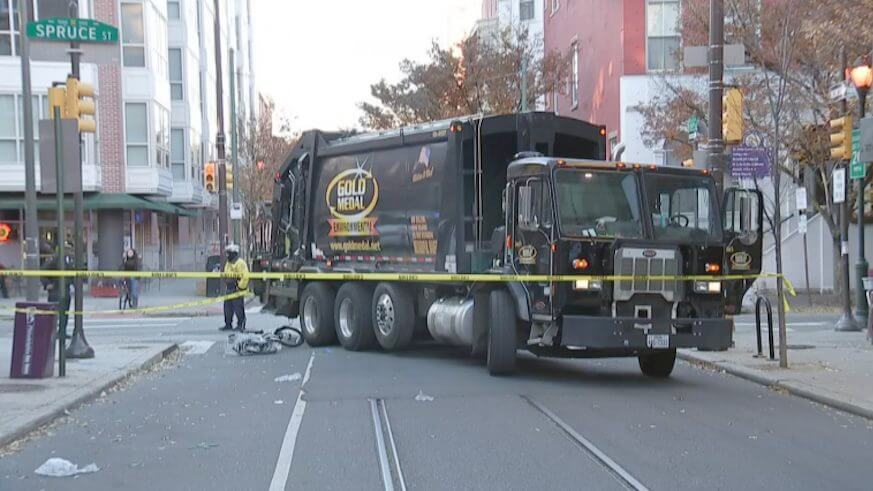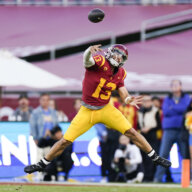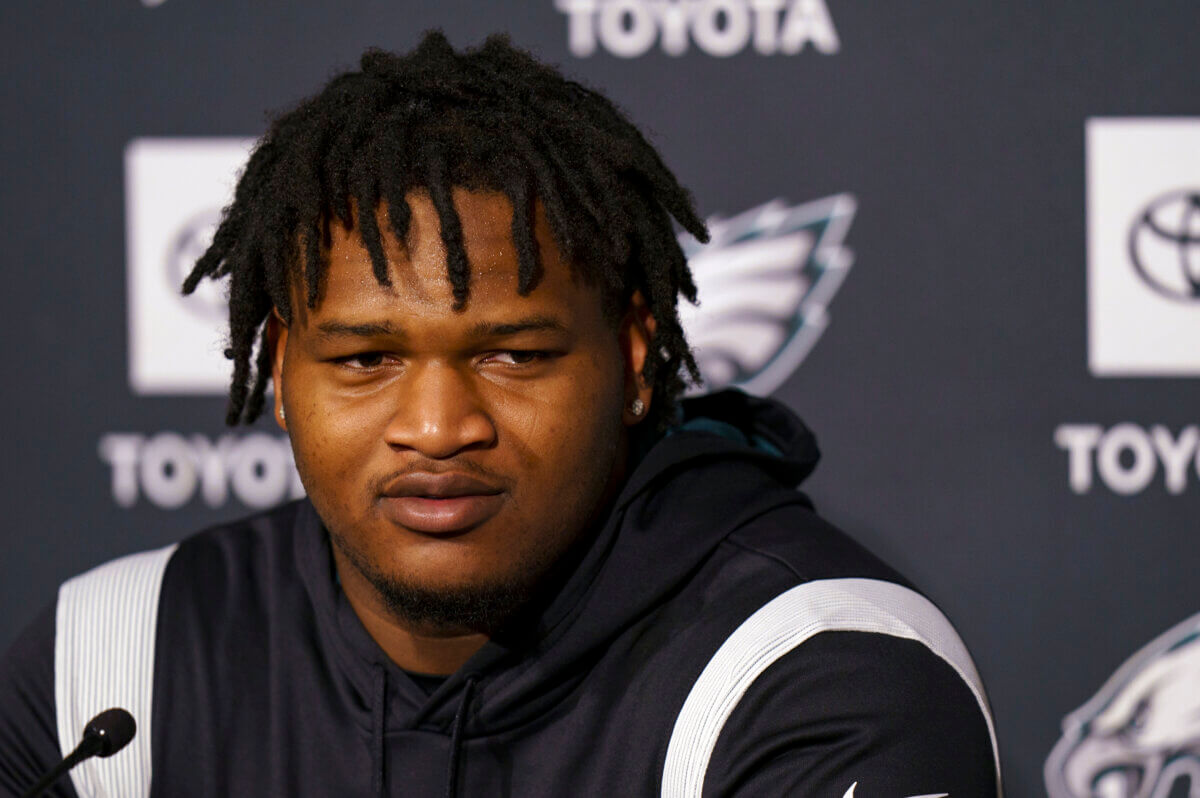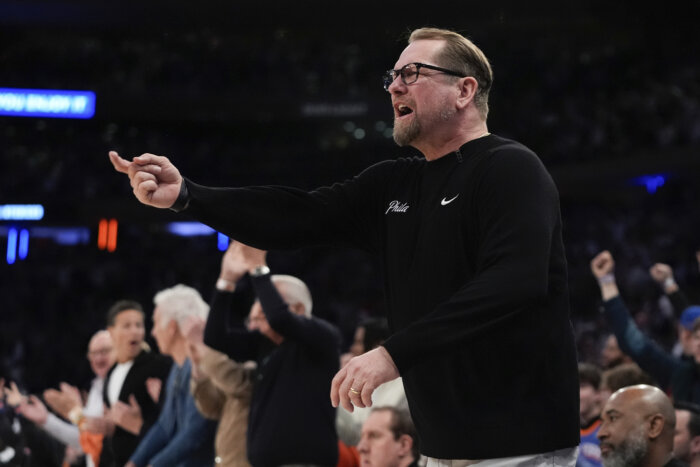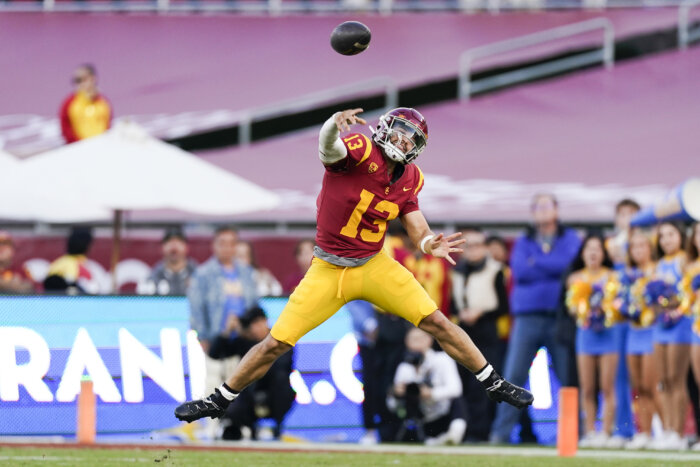When bike lanes on Spruce and Pine were installed in 2009, they were pretty cutting edge, as far as U.S. multimodal travel went. Stretching through Center City from river to river, the lanes were installed after removing a lane of motor vehicle traffic, and prioritized bicycle transportation and pedestrian safety. Despite the occasional motorists who used a lane as their personal parking spot, the lanes were pretty comfortable to ride on.
But things have changed.
Like many bike lanes all over the city, Spruce and Pine have deteriorated to the point that it’s tough to tell where the motor vehicle lane ends and the bike lane begins.
The degenerated streets and two extreme bike crashes this past winter — one of which killed Emily Fredricks, the other of which badly injured Rebecca Redford — have led the Mayor’s Office of Transportation and Infrastructure Systems (OTIS) and the Streets Department to prioritize street paving for these two streets in 2018. This is an opportunity to decrease harmful interactions between motorists and cyclists within the next nine months.
Their plan: switch the bike lane from the right side to the left.
This may sound weird, but there are potential benefits to the switch. It’s a good start, a step in the right direction, and those interested in the plan can learn more at two public meetings this week, on April 4 (at the Kimmel Center) and 5 (at University of the Arts).
What Spruce and Pine need, for real, are protected bike lanes and protected intersections — physical barriers between cars and cyclists the whole length of the street — and physical changes to the intersections that force motorists to turn wider, not merge into the bike lane. Every study and practical usage of these changes have had positive safety results.
Nevertheless, switching from the right to the left may give drivers more visibility (since cyclists will be on the same side as the driver) and create a narrower blind spot than on the right.
The second benefit is that shifting the lane will reduce the likelihood of interactions between cyclists and motorists taking right-hand turns. Right hand “hooks” are the most prevalent type of bicycle crash in cities nationwide.
Angle crashes, of cars turning right, into cyclists, are the most common type of bicycle crash on Spruce and Pine, making up 61 percent of total crashes, according to a Bicycle Coalition of Greater Philadelphia analysis.
Lastly, shifting the bike lane to the left will reduce interactions with SEPTA’s Route 7 bus.
Those are the benefits as I see them. But more is needed.
The most glaring issue with these lanes is motorists’ propensity to park in them whether it’s allowed or not. And although the Philadelphia Parking Authority has increased its ticketing more than 120 percent since 2014, increased enforcement hasn’t solved the problem of illegal parking. In fact, it seems to have gotten worse.
A real change to the bike lane’s engineering is what’s needed to make cyclists, pedestrians and motor vehicle drivers safer on these streets.



